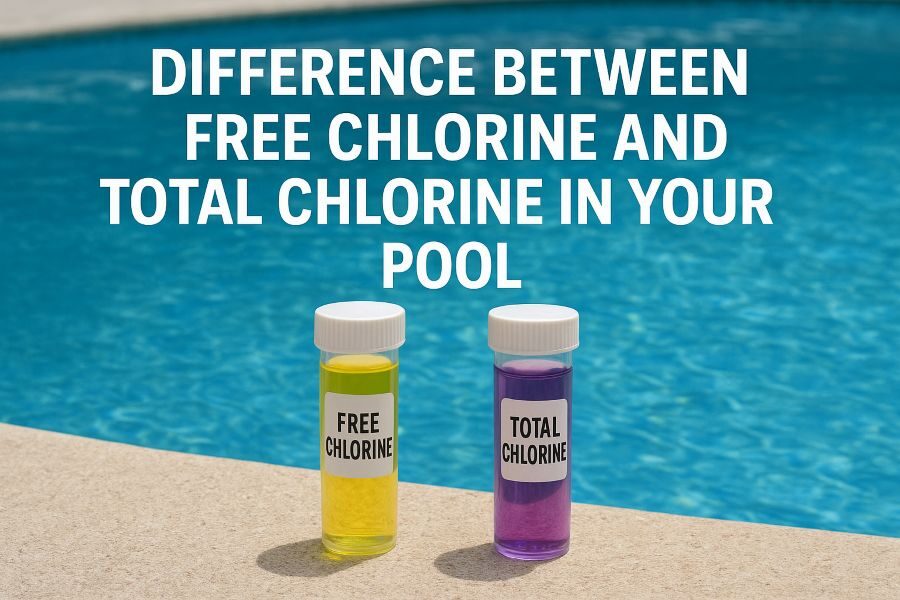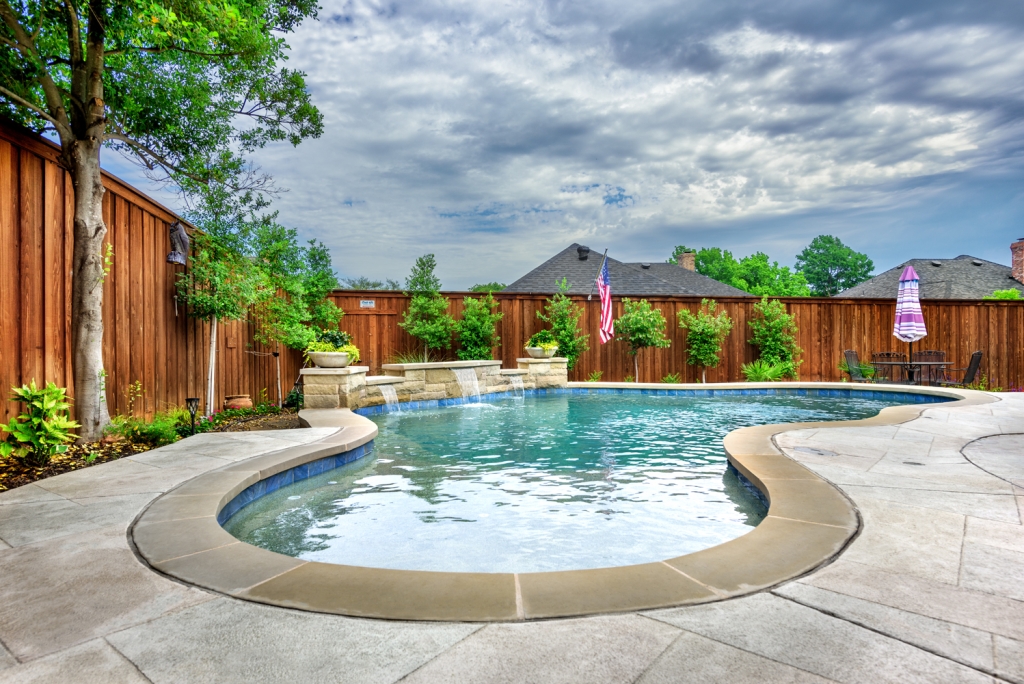Maintaining proper chlorine levels in your swimming pool is essential for clean, safe water. Chlorine kills harmful bacteria, prevents algae growth, and keeps your pool sparkling. However, understanding the different types of chlorine—and how to measure them—can be confusing for pool owners. In this blog, we’ll explain the three main types of chlorine, how to test for each, and the key difference between free and total chlorine.
You’ll also like to read this: How to Increase Free Chlorine in Pool
Understanding the 3 Types of Chlorine
Chlorine in a pool is not just one thing—it exists in three forms:
Free Chlorine (FC)
- This is the chlorine available to sanitize your pool water.
- It kills bacteria, algae, and other harmful microorganisms.
- Maintaining the right free chlorine level ensures your pool is safe to swim.
Combined Chlorine (CC)
- This is chlorine that has already reacted with contaminants like sweat, oils, and urine.
- Combined chlorine is less effective as a sanitizer and can cause unpleasant odors (chloramines).
Total Chlorine (TC)
- This is the sum of free chlorine and combined chlorine: Total Chlorine (TC)=Free Chlorine (FC)+Combined Chlorine (CC)\text{Total Chlorine (TC)} = \text{Free Chlorine (FC)} + \text{Combined Chlorine (CC)}Total Chlorine (TC)=Free Chlorine (FC)+Combined Chlorine (CC)
- Keeping track of total chlorine helps you determine how much chlorine is actively sanitizing the pool and how much is “used up.”
How to Test for Free, Combined, and Total Chlorine in Your Pool
Testing chlorine is easy with a pool testing kit. Here’s how:
Free Chlorine
- Use DPD test tablets or liquid reagents.
- Add the reagent to a water sample, and compare the color change to the kit’s chart.
Total Chlorine
- Add the DPD reagent with a different procedure to measure all chlorine, including combined chlorine.
Combined Chlorine
- Subtract free chlorine from total chlorine: Combined Chlorine=Total Chlorine−Free Chlorine\text{Combined Chlorine} = \text{Total Chlorine} – \text{Free Chlorine}Combined Chlorine=Total Chlorine−Free Chlorine
Regular testing ensures your pool is safe, and adjusting chlorine levels prevents skin irritation, eye redness, and algae growth.
Difference Between Free and Total Chlorine
Understanding the difference between free chlorine and total chlorine is essential for proper pool maintenance. The table below summarizes the key differences:
Feature | Free Chlorine (FC) | Total Chlorine (TC) |
Definition | Chlorine available to sanitize | Sum of free chlorine + combined chlorine |
Purpose | Kills bacteria and algae | Indicates overall chlorine level |
Measurement | Directly measures active sanitizer | Includes active and used-up chlorine |
Ideal Level in Pool | 1–3 ppm | Usually slightly higher than free chlorine |
Issues if Low/High | Low: unsafe pool; High: irritation | Low: may indicate combined chlorine issues; High: may cause strong chlorine smell |
Final Thoughts
Properly managing chlorine in your pool ensures clean, safe water and a comfortable swimming experience. Knowing the differences between free, combined, and total chlorine allows you to maintain the right levels and prevent common pool problems like algae, odors, and irritation. Regular testing and adjustments are key to a healthy pool all season long.
Ready to keep your pool crystal clear this season? Contact our pool experts today for professional testing, advice, and chlorine management solutions to enjoy a safe and sparkling pool all year long!
FAQ's
How often should I test my pool chlorine levels?
Test at least 2–3 times a week during swimming season, more frequently during hot weather.
What is the ideal free chlorine level?
1–3 ppm (parts per million) is ideal for safe swimming.
Can I swim if total chlorine is high but free chlorine is low?
No. Low free chlorine means there isn’t enough active sanitizer, even if total chlorine appears high.
How do I reduce combined chlorine?
Shock your pool with extra chlorine to break down chloramines and restore sanitizer effectiveness.
What happens if I ignore chlorine levels?
Algae growth, cloudy water, bacteria buildup, and irritation to skin and eyes can occur.



